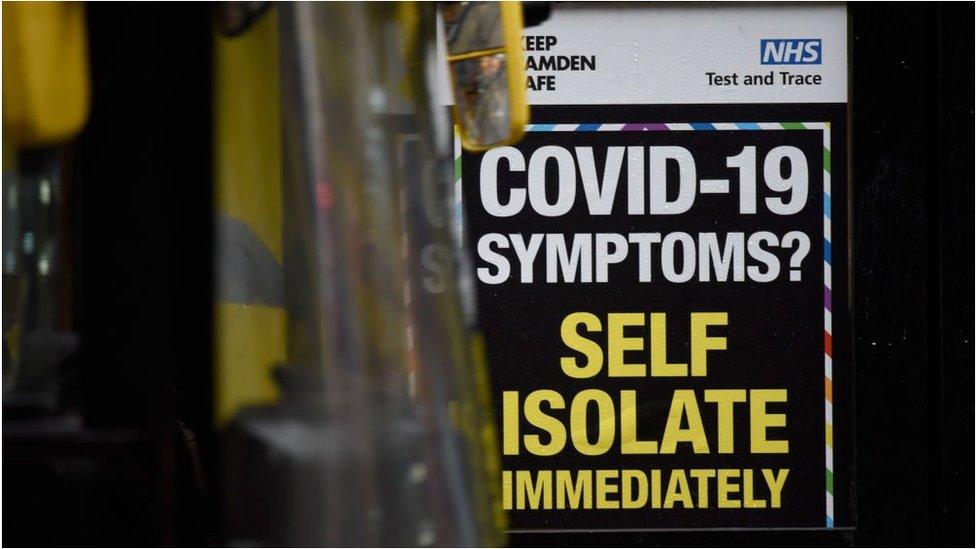Glimmer of hope even as Covid cases rise
- Published
- comments

In a glimmer of hope, cases of Covid-19 appear to be levelling off in the North East of England, according to the Office for National Statistics (ONS).
Cases there remain high, but have not continued the skyward trajectory of other badly hit regions such as the North West and Yorkshire and the Humber.
However overall cases have continued to rise, the data shows.
The government says it is "striving" to avoid new national restrictions.
The North East stands in stark contrast to the rest of the country - cases are going down without using the tightest restrictions.
Large swathes of the region - including Tyne and Wear, Tees Valley, Northumberland and Durham - are in the Tier 2 or "high" alert level.
But none are in the same camp as Greater Manchester and now Nottinghamshire where people are in the "very high" alert level.
The data from the north east are similar to yesterday's React study, which tested 86,000 people at random. It showed cases were still rising, but had slowed down significantly compared with the rest of the country.
It also reported a fall in cases in 18- to-24 year olds in the north east, but a rise in older age-groups.
The ONS study tests people in homes in England so misses cases in care homes, hospitals and students away at university.
Today's data also showed:
Around 52,000 people were catching the virus, with or without symptoms, every day in homes in England up to last Friday
This is up from 35,000 the week before
But is still half the estimate of 100,000 a day from the React study
Cases are rising "steeply" in the North West and Yorkshire and The Humber
And across the country, rates appear to be "steeply increasing" among secondary school children
Rates are increasing in Wales, where one-in-120 people have the virus, and in Northern Ireland where one-in-80 have it
In Scotland, one-in-140 people are testing the positive for the virus, in England it in one-in-100
The latest R number for the UK - the number of people each infected person passes the virus on to on average - is between 1.1 and 1.3.
This is lower than last week's estimate, of 1.2 to 1.4, but anything above 1.0 means cases are still growing.
The UK government's chief medical adviser, Prof Chris Whitty, said: "Deaths and pressure on the NHS are increasing."
Allow X content?
This article contains content provided by X. We ask for your permission before anything is loaded, as they may be using cookies and other technologies. You may want to read X’s cookie policy, external and privacy policy, external before accepting. To view this content choose ‘accept and continue’.
Meanwhile, the Covid Symptom Study app - based on one million people logging their symptoms and 12,000 tests results - suggests 44,000 people are developing Covid symptoms every day, up from 36,000 last week.
Prof Tim Spector, who analyses the app data at King's College London, said: "We are still seeing a steady rise nationally, doubling every four weeks, with the possible exception of Scotland which may be showing signs of a slow down."


Earlier, Foreign Secretary Dominic Raab said the government was "striving" to avoid new national restrictions. This week, both Germany and France have taken this step.
Mr Raab told the BBC that ministers were "confident" they had "the right measures and framework in place, which is not to have a blanket approach, but to target measures [...] on the areas where the uptick is highest".
Follow James on Twitter, external